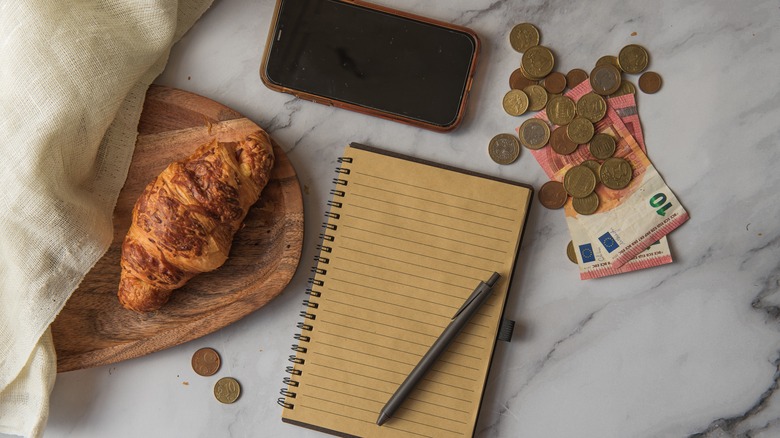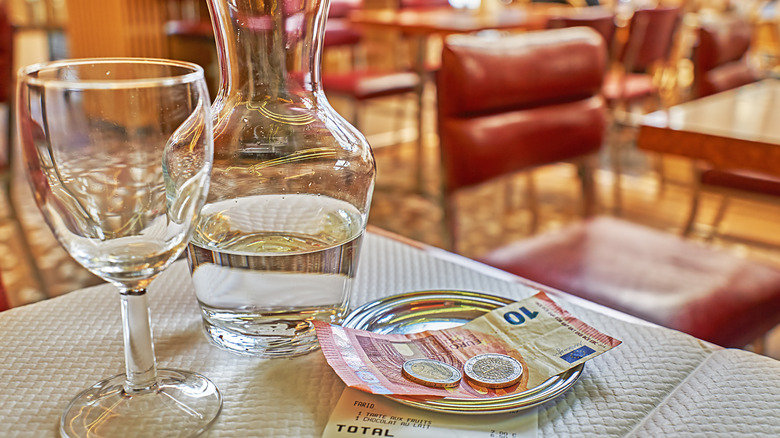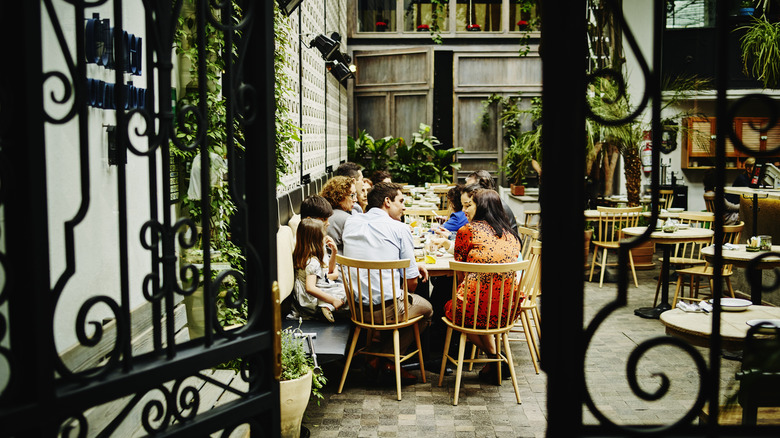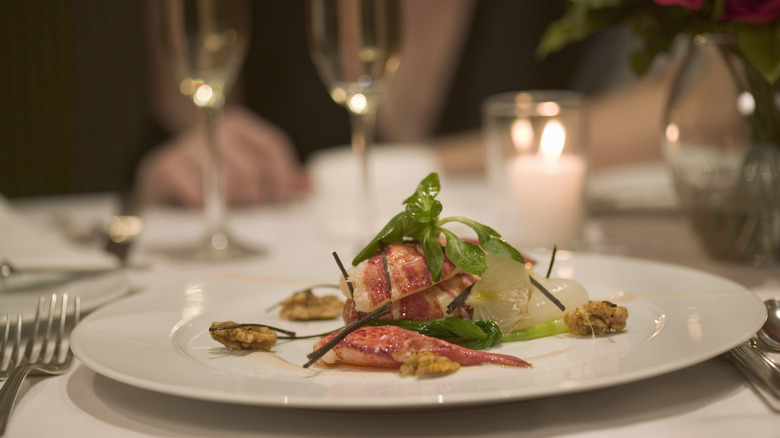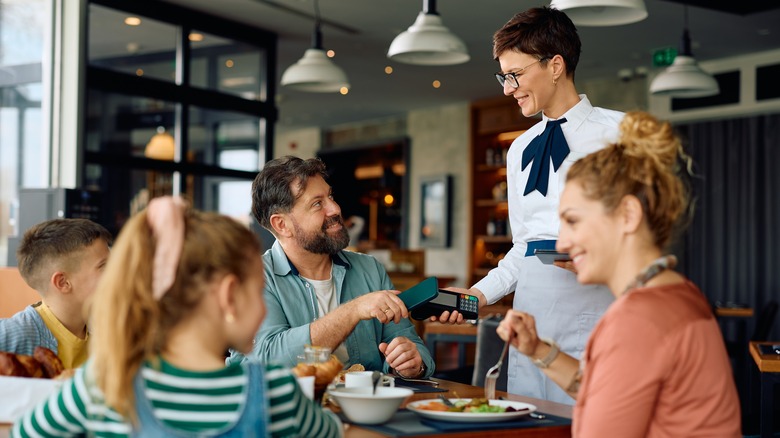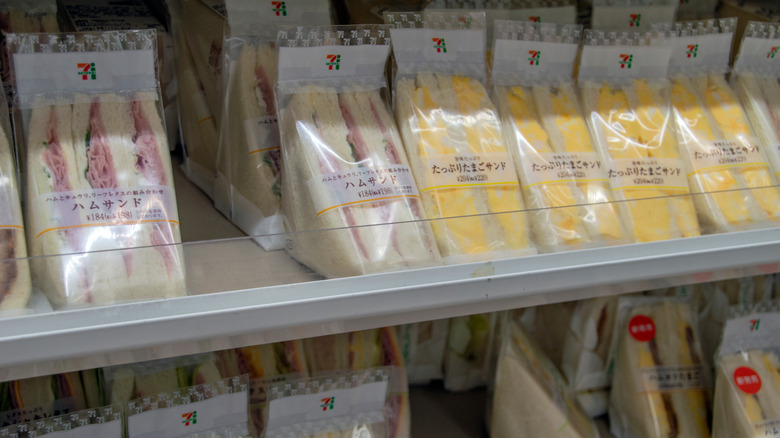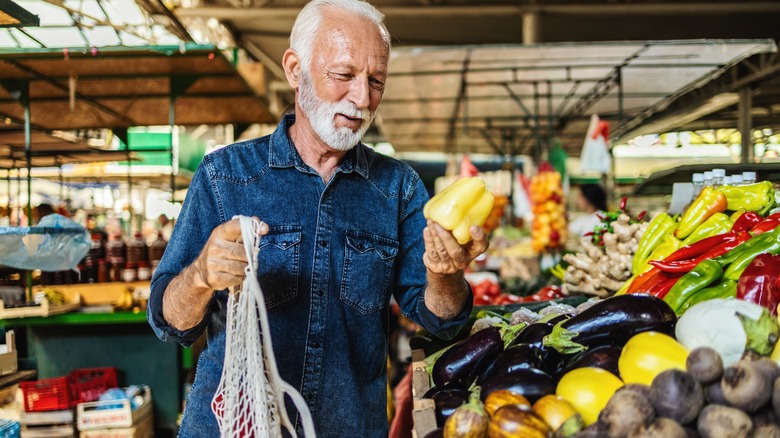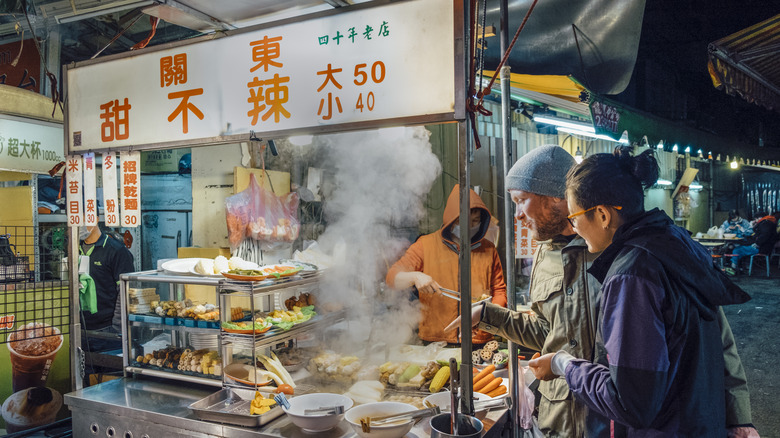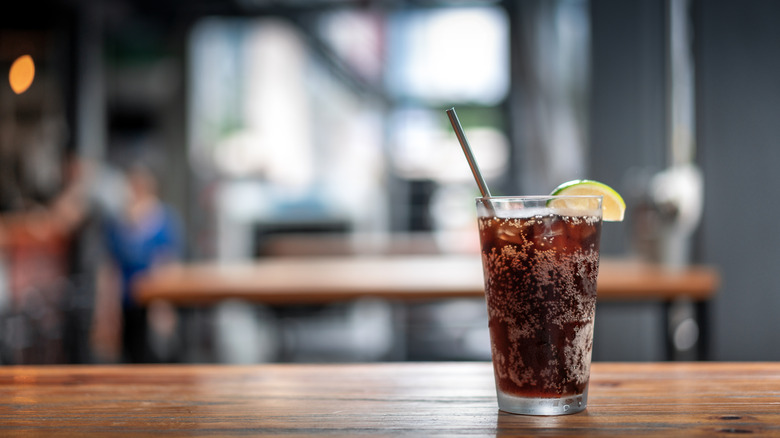12 Tips You Should Know To Save Money On Food When Traveling
Whether you're a diehard foodie or just a human being who needs to eat, food will be a part of your travels. And it shouldn't be one of the last things you consider when budgeting for a trip. This means you could end up spending way more than you need to on meals and snacks. Luckily, there are lots of ways to save on food-related expenses when you're traveling. Here's more good news: Having a small food budget doesn't mean you won't be able to eat well. In fact, it might even lead to some amazing meals.
This has been the case for me. I'm an experienced travel writer and travel planner, as well as a passionate traveler. Whenever traveling and often when planning trips for others, eating well but affordably (or even dirt cheap, if possible) is a major goal. Fortunately, it's a very achievable one. I've had some unforgettable meals and tasty snacks in places around the world, and have rarely spent a lot doing it. Here are some of my favorite tips for saving money on food when traveling.
Do some research
Sometimes when you travel, you luck into a budget meal, but as a general rule, it will probably require a little research. Before you head to your destination, set aside a little time — as little as 15 minutes or so might do it — to get a general idea of how much different foods and drinks that interest you would typically cost where you're headed. See if it's generally considered an expensive destination, and if it is, try to find a few tips to help you save money on food. You can do this with a general internet search, but guidebooks and online resources like Wikivoyage, one of my personal favorites, may also give you some great tips and even specific good but inexpensive eateries.
You may also want to learn about typical dishes and snacks at your destination, as well as how much these usually cost. Often, you might be pleasantly surprised. For instance, not only are those long baguettes and croissants iconic French specialties; they're incredibly inexpensive, usually costing less than €2 each, and are easy to find pretty much anywhere in France. Your research will help you get a general idea of your food and drinks budget wherever you're headed, and will also hopefully reassure you that you can still eat some delicious things without having to blow all of the money you saved for your trip. In addition, if you find yourself being charged way more than the going price for a food item, you'll know to move on and order it elsewhere.
Be aware of hidden costs and tipping
Another reason that research is an important part of budget travel (or really any kind of travel, if you ask us) is that it can help you avoid hidden food- or drink -related costs. For instance, if you're planning a trip to Italy, you should know about the coperto (sometimes called pane e coperto), a charge you'll see on your bill at most sit-down Italian restaurants. This is a traditional charge for your table setting and bread, and while it should only put you out a few euros per person, if you're on a very tight budget, you might want to consider avoiding it by getting takeaway, ordering from a place that makes fresh sandwiches or other offerings and doesn't have seating, or heading to a fast food or self-service eatery, instead (of course, to know about all these options, you would also have had to do research). Even if you still want to go the traditional restaurant route, at least you'll be aware of this cost and include it in your budget.
And on the other hand, if you've done your research you'll also know that tipping isn't required in Italian restaurants, so at least you'll be able to save money that way if you need to. In fact, as a general rule, the tipping etiquette of the place you're headed is another important thing to know, especially if you're traveling on a budget. Often, you'll find that you may only have to leave a small tip, or even that tipping at a restaurant simply isn't done or is discouraged, as is the case in Japan, for instance.
Eat away from major tourist areas
One of the most common pieces of advice you'll come across for travelers on a budget is to eat or buy food in places that are outside major tourist areas. Although there are some exceptions, as a general rule, restaurants and food stands are pricier the closer you get to anything that draws crowds. There is some consolation. While it might seem inconvenient, you'll probably find more authentic, better quality food off the beaten path. This is because locals are eating at these places, not tourists who might be tricked into paying high prices for lower quality food and pale imitations of local specialties.
Going off the beaten path can also lead to discovering unusual sights, getting new perspectives on everyday life in the place you're visiting, and finding cool souvenirs, as well. One of my favorite personal experiences with this was when my husband and I strolled a few streets from Siena's famous Piazza del Campo. We found ourselves in a charming undulating street, got to admire a beautiful old church, and came upon a tiny, drab-looking restaurant where we ended up eating one of the best meals we've ever had in our lives. It cost far less than even a fancy drink in the Piazza del Campo would have, and years later, we still talk about it. So, if your budget won't let you give in and eat next to that big tourist attraction or in that famous square, don't see having to get away from the tourist attractions as an inconvenience — see it as an adventure that might just lead to unexpected, delicious discoveries.
Budget for one expensive meal
Budget eating doesn't have to mean not eating well. In fact, it's often quite the opposite. Good quality, truly authentic food eaten by locals is often much more affordable than that trendy or Michelin-starred restaurant right around the corner. But that being said, maybe there's a high-end restaurant or bar you've always dreamt of visiting and having a meal or drink at. Even if you're on a tight budget, you may not have to give up your dream, and you don't have to.
Instead, let budget eating help you. Allow yourself this splurge and then take advantage of the less expensive restaurants, foods, and markets in your destination the rest of the time. Doing this is also a great way to get the best of both worlds: a luxury or trendy dining experience plus affordable local cuisine.
Look for deals on-site and online
Whether you're already fluent in your destination's local language or you know enough to get by, it can help you find even more ways to save money on food during your trip. If you pass by a restaurant that looks good, take a close look at the menu; you may discover deals, reduced-price menus, student or senior discounts, or limited-time special offers.
Food stand or market vendors may be calling theirs out. You can find out about food-related bargains online, too, whether before or after you head to your destination. Not all restaurants have a website or social media, but many do, and they're worth a look if you're on a budget. Checking out a restaurant's social media, if it has any, is an especially good idea, since it's likely to announce deals and limited time offers there.
Know local restaurant customs
Before you head to your destination, be sure you know how restaurants work there. This can help you be polite to locals and servers, and even simply ensure you'll be able to get a meal at all, since, in some destinations, not all eateries stay open all day. Knowing what to expect in a typical restaurant in your destination can also save you money.
For instance, in Paris, many restaurants offer special lunch menus that are cheaper than their dinner menus. To save even more, it's perfectly acceptable to ask for a pitcher of tap water (which is very safe and drinkable, and considered some of the best in the world, at least by Parisians) for free, rather than bottled water you'd be charged for. You can familiarize yourself with restaurant rules, customs, and etiquette in your destination through online forums. Guidebooks often have a small section on restaurants that could include some helpful tips, too.
Grocery stores are your friend
If you're planning a trip, check out a map of the local area to see if there's a grocery store or supermarket near where you'll be staying or touring. Keep in mind that grocery stores aren't just for travelers who have access to a kitchen. Most of them sell ready-made meals and may even offer freshly prepared food, as well, usually for a lot less money than similar meals you'd get at a restaurant. Depending on where you go, these meals can be downright delicious, too. For instance, my family loves the rotisserie chicken (frango assado) at Portuguese supermarket chain Pingo Doce's sit-down restaurant so much that it's always on our list of places to eat when we travel there.
Even if you prefer to have all of your meals at traditional restaurants, grocery stores are still a source of drinks and snacks that are a lot cheaper than anything you'll find in shops or stands near touristy areas. In addition to saving you money, going to a local grocery store or supermarket will also let you get a glimpse of life as a local. You might even discover new products and tasty snacks (this is how I became obsessed with Japanese rice crackers). It's strange to think that some of the best things about traveling can be found between rows of grocery store shelves. Just one thing to keep in mind: Not all grocery stores are the same. Small, individually run corner shops are usually more expensive than chains, so if you can, go bigger.
Expensive food isn't the only good food
Many people believe that the more food costs, the better it is. But anyone who's paid a high price for a bad or even simply "meh" meal knows the truth. The numbers on a bill are not a tastiness score. Some expensive fare is definitely worth the price, but in most places around the world, you can find delicious food for cheap — and sometimes, it's so good that it's become downright iconic.
One notable example of this is a sandwich that's garnered fans around the world. Eat at one of Japan's many high-end restaurants and you're not likely to regret it. But you'll also find an unforgettable taste experience in one of the country's many 7-ELEVEN convenience stores: the chain's iconic egg salad sandwich. Its combination of eggs, Kewpie mayo, and milk bread makes Japan's 7-ELEVEN egg salad sandwiches something foodies across the globe love and crave, inspiring everything from rave reviews to copycat recipes. Even travelers on a very tight budget can enjoy this local delicacy, since the sandwiches only cost a few hundred yen (around $2 to $3). Take that as a lesson: Deliciousness can be anywhere. You don't necessarily need a huge budget to try legendary food when you travel.
Head to local markets in inexpensive areas
Before you head to your destination, or when you arrive, find out if there's a local market. Farmers' markets are often a great source of inexpensive, high quality produce and other kinds of food, sometimes even including prepared meals.
That said, not all markets mean cheap eats. As a general rule, if a market is famous, or located in an upscale area or an area with a lot of tourist traffic, the prices will be higher than you might think. In most cases, the best kind of market to look for if you want to save money would be one in a middle or lower class residential neighborhood. If you can get to one of these, that's where you're likely to get the best deals. Also, no matter how low prices are, remember not to waste your budget by buying too much produce, since it might be hard or even illegal to bring back home.
Eat street food
In most places, street food is a lot cheaper than eating at a restaurant, plus it's an incredible opportunity to soak up local culture and try true local specialties. Even if you're just looking for a snack, street food is a great option. For instance, my snack budget is a few dollars per person at most when I visit Manhattan because my family and I love street cart pretzels. Street cart hot dogs are also a good occasional meal, and ordering from one of these carts is itself an iconic New York experience that costs just a few bucks.
Depending on where you go, some street food might come with risks. To be safe, travelers and street food aficionados have found strategies that keep them from getting sick. These include eating at stalls where there are a lot of women and children (the latter group, especially, has more sensitive stomachs), only eating when food is freshest, and opting for fully cooked food. Whether for street food or any other food, it's also important to avoid food that's rinsed or served in water if the local water isn't filtered. This ties in with another tip: Try to only eat fruit you can peel, rather than fruit that's been washed in unfiltered water, or possibly not washed at all.
Check soft drink prices before you order
There's nothing like a cold soft drink when you've been touring around for a while. If you live in America, you may even be used to getting free refills of your favorite when you go to restaurants. But soft drinks can be a pricey trap in many other countries. For instance, in a number of European destinations, ordering a Coca Cola or other American soft drink will often set you back several euros more than a fruit juice, sparkling water, or other beverages on the menu. In some cases, a soft drink might even cost more than certain alcoholic drinks.
So, if you go into a restaurant craving a soft drink, check the menu before you order. If it's expensive, opt for something else and satisfy your soda craving later by heading to a grocery store or vending machine.
Opt for the less pretty packaging
Sometimes you need a nice souvenir to bring to someone back home, but be aware that pretty packaging can make a delicious gift cost even more. For instance, you'll find chocolates or other local sweet specialties in souvenir shops around the world, usually encased in nice wrapping or packaging that showcases something about the place you're visiting. But if you're buying for yourself, or for someone who doesn't care about the frills, you can probably find the same product (and often, a more authentic or better-quality version), at the local grocery store or market, for a much lower price.
The biggest visible difference is that it won't come in that fancy packaging, since it's being sold to locals, not tourists. Unless presentation is important, remember that it's not what's on the outside, but what's on the inside that counts. Opt for simpler packaging and you'll come home with a tasty souvenir, as well as some money left in your pockets.
